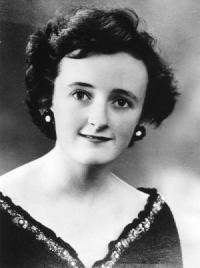Beatrice Tinsley
Univeristy of Texas Austin
Physics
1968
Galaxies, Cosmology
Astronomy, Cosmology
https://en.wikipedia.org/wiki/Beatrice_Tinsley
UGUD
Scientist Biography
Biographical information
Beatrice Tinsley was born Beatrice Muriel Hill in England on January 27, 1941, but she grew up in New Zealand. In 1961, she married Brain Tinsely, who was a peer that also studied physics. She and Brian eventually moved to Texas, where Brian worked at the University of Texas, Dallas. Soon afterwards, Tinsley enrolled in graduate school at the University of Texas, Austin, where she was the only female student. Tinsley commuted 400 miles every week to attend graduate school. In graduate school, Tinsley became very fascinated with cosmology and the exploration of the eventual fate of our universe. Her research focused on the way that galaxies evolve and change over time. Tinsley famously won a heated argument with leading astronomer Allan Sandage, where she argued that he had misinterpreted his data and the fate that he determined for the universe was false. Sandage's work indicated that the Universe would eventually collapse back into itself in a 'Big Crunch,' based on the distances to giant elliptical galaxies that he used to infer the expansion rate of the Universe. However, Tinsley argued that Sandage's distance estimates were incorrect: they were based on the assumption that galaxies do not change substantially over time. Tinsley's work, however, showed that evolution in the structure, age, and chemistry of galaxies was necessary to accurately measure their distances. Her modeling of these properties suggested that the Universe would likely expand forever as an 'unbounded universe' rather than eventually collapsing. This 'unbounded' state of the universe was later confirmed a quarter of a century later using exploding stars as distance indicators instead of galaxies. Beatrice Tinsley was awarded the Annie Jump Cannon Award from the American Astronomical Society (AAS) in 1974, and in 1978 became the first woman astronomy professor at Yale. Tinsley died at age 40 in 1981 from melanoma. In 1985, the AAS created the Beatrice Tinsley Prize to recognize outstanding research contributions to astronomy of an exceptionally creative or innovative character, with the inaugural prize being awarded to Jocelyn Bell Burnell.
Key Contributions
Tinsley's work on the evolution of galaxy colors and luminosities had big implications for the history and fate of the Universe. Many measurements of the structure and expansion of the Universe require simultaneous measurements of the velocity and distance to individual galaxies. Measuring distances is particularly difficult, as it usually requires knowing the intrinsic size or luminosity of an object being measured, based on measurements of similar objects in the nearby Universe. Tinsley's work on galaxy formation showed that galaxies in the early, distant Universe are intrinsically different from those nearby. Her work thus nullified previous attempts to measure cosmological distance from galaxies, but it also laid the groundwork for more accurate measurements of galactic distances and cosmological expansion.
Much of Tinsley's work focused on how the colors and luminosities of galaxies change over time, both individually and collectively over the course of the Universe. Astronomers knew that stars have different colors and change their colors over time based on studying star clusters in our Milky Way, but Tinsley demonstrated how stellar evolution among populations of stars affects the overall luminosities and colors of galaxies. She also studied the co-evolution of gas and stars in galaxies, including the formation of gas into stars, and the mixing of new elements into the gas after being produced by stars. In general, these works showed how the colors, shapes, luminosities, and chemical properties of galaxies are interrelated and evolve over time.
